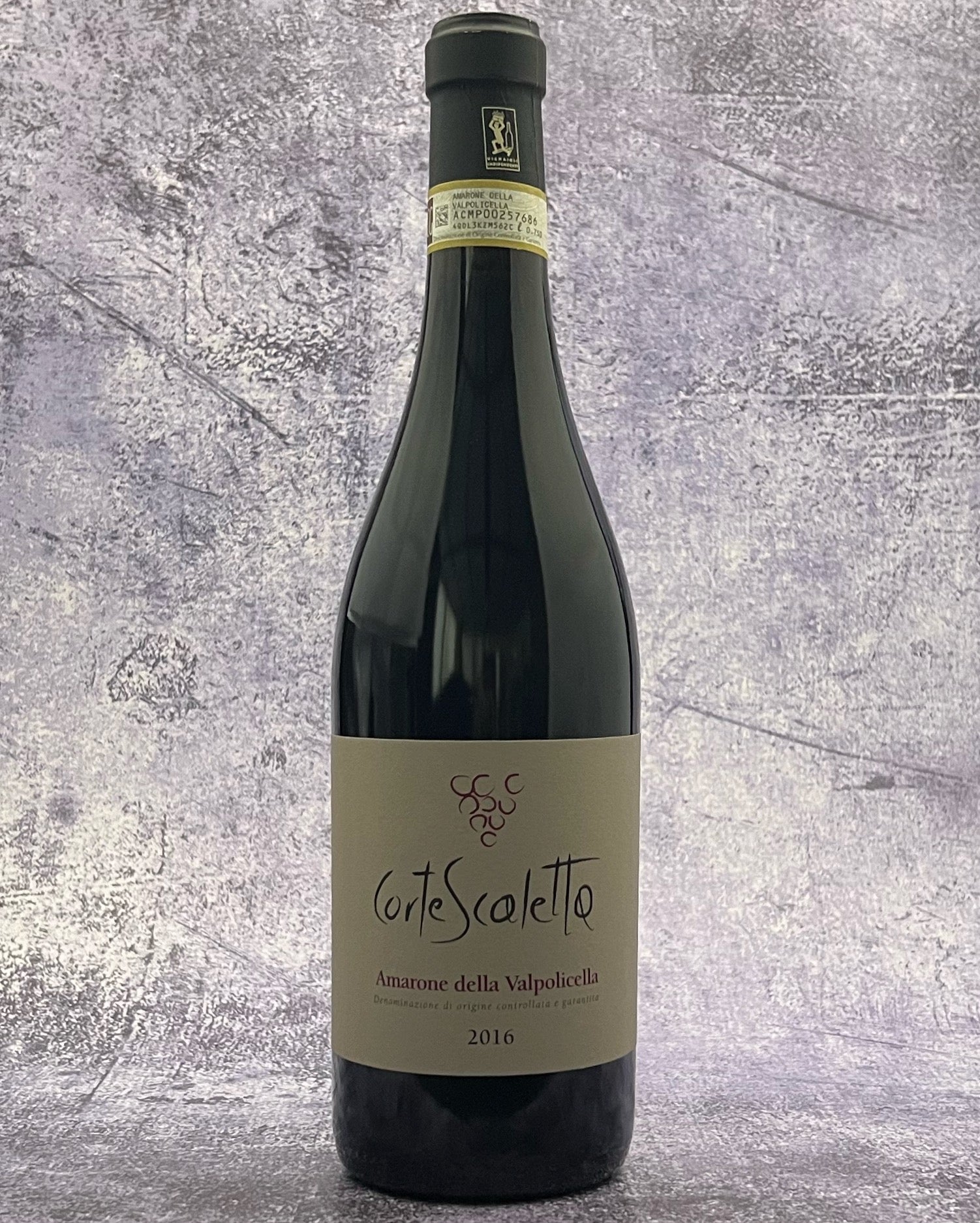Details:
Product Details
| Country: | Italy |
|---|---|
| Region: | Veneto |
| Appellation: | Amarone della Valpolicella DOCG |
| Grape(s): | Corvina, Corvinone, Rondinella |
| Wine Style: | Red |
| Composition: | Blend |
| Practices: | Sustainable Viticulture, Practicing Organic |
Tasting: On the nose, it presents delightful and concentrated aromas of fruits, such as
raspberry, blackberry, and fig, complemented by a hint of orange zest and baking spices
like cinnamon, brown sugar, and even a touch of clove. The palate is greeted with a soft,
rich texture, ample body, and a slight spiciness. Sweet hints of black cherry and ripe
fruit continue to evolve on the palate, with more umami flavors rounding out the rear
for a complex and lingering finish.
Pairing: The 2017 Corte Scaletta Amarone della Valpolicella is a bold, concentrated red that pairs best with equally robust and savory dishes. Its structure and depth make it a natural companion for slow-cooked meats like braised beef, oxtail stew, or short ribs, where the wine’s richness mirrors the intensity of the dish. Game meats—especially duck, venison, or wild boar—highlight Amarone’s earthy complexity, while a grilled Scotch fillet or bacon-wrapped roast holds its own against the wine’s power.
About: Corte Scaletta, a family-run farm in the verdant Marcellise Valley, is just a stone's throw from the historic city of Verona. Established as a vineyard in 2011, Corte Scaletta is a testament to the family's deep connection to the land and their commitment to producing high-quality wines that reflect the unique characteristics of the Valpolicella DOC region.
The vineyards of Corte Scaletta are nestled in an idyllic setting, shielded by surrounding mountains and hills that create a microclimate ideal for grape cultivation. The estate sprawls across the pristine landscapes of Marcellise and the Musella estate, where traditional grape varieties like Corvina, Corvinone, and Rondinella flourish alongside a smaller vineyard of Cabernet Sauvignon.
In line with sustainable agricultural practices, Corte Scaletta shuns chemical herbicides. Instead, they maintain the natural grasses that thrive among the vine rows, contributing to a balanced and healthy ecosystem. This harmonious relationship with nature is reflected in every aspect of their vineyard management, from the careful hand-selection of grapes to the meticulous cutting of grass under the vines using specialized machinery.

